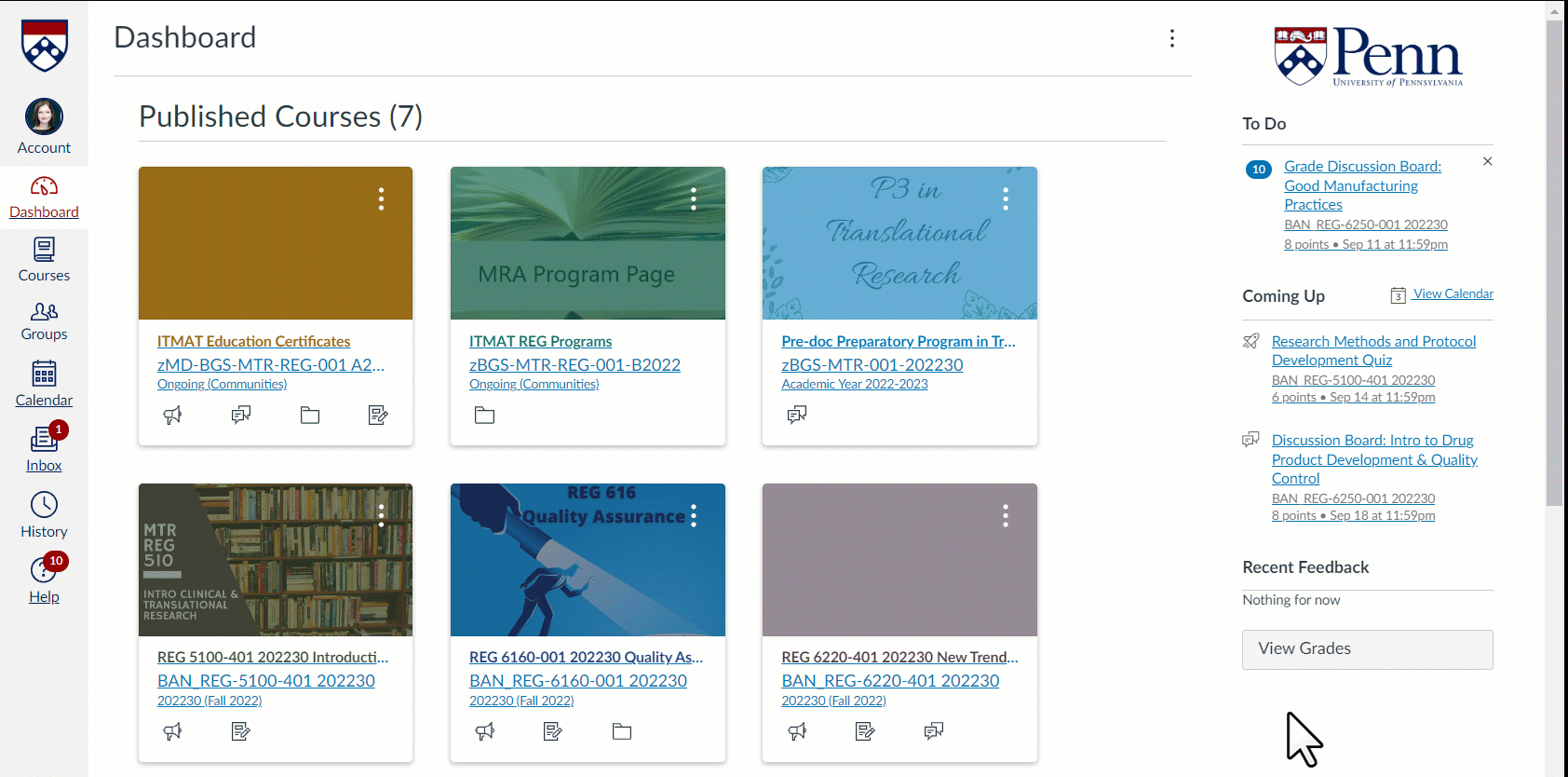Online Learning Best Practices
Remote course delivery can add flexibility for instructors and students by allowing for both synchronous interactions (live sessions delivered remotely) and asynchronous learning (scheduled learning time used for the review of resources, completed assignments, etc.). As a student you may engage in both delivery methods.
If you have questions, feel free to reach out to your designated program staff. If you have a circumstance or disability for which particular accommodations might be helpful, please check in with the Weingarten Learning Resources Center and program staff (see contact info below).
Canvas Best Practices
- Fill in Your Canvas Profile. Adding a profile photo and your pronouns to your Canvas page are an easy way to let your instructor and classmates get to know you better. You can also fill in your biography and other details.
- Turn on Notifications. Under Account > Notifications, you can select which items will prompt an email or notification. Notifications will help keep you up-to-date and engaged in online courses. You especially should make sure to enable notifications for Announcements, Canvas Inbox messages.

Synchronous Sessions
- Arrive Early. Be on time; make sure to log in to the virtual session a few minutes early to make sure your audio and video work properly. (Sometimes headphones take additional time to set up and troubleshoot.)
- Be Visible. We encourage you to use your video when possible. It is important to the instructor and other students to feel engaged and at attention.
- Limiting Noise. Participate as you would in an in-person class. Keep yourself muted to reduce background noise, and then un-mute to ask questions when you have them. You can use Zoom's chat function to ask questions or share resources without disruption.
- Request Live Transcription. If for any reason captions would help you understand or retain the lecture better, you can request that the instructor/host enable live transcription in Zoom so that you can view captions during the synchronous session. The instructor/host may already enable live transcription by default.
- Be Thoughtful. Be considerate of one another; don’t talk over one another or leave class early. If the instructor asks questions and you have a response, then share it. Synchronous sessions work best when you are an active participant.
- Review Resources Ahead of Time. Review any materials shared prior before coming to class to ensure you have a firm grasp on the content and are prepared.
- Location. Try to find a quiet place, free of distractions or background noise.
- Be an Active Audience Member. During student presentations, make sure to engage the same way you would with the course director.
- Be Prepared. If student presentations are part of your course, test out the screen-share option prior to class to ensure you do not have any issues.
- When developing your slides, make sure to use a font that is accessible for viewing online such as Calibri or Arial. Additionally, if you use any colors in your text, avoid low-contrast colors. Use the accessibility checklist when drafting presentations.
Asynchronous Modules
- Familiarize Yourself with the Course. Get to know the structure and day-to-day functions of the course, both the synchronous and asynchronous components. Modules are generally set up with a uniform structure, so getting familiar with the Canvas environment will help you know what to expect in future weeks.
- Note Due Dates. Asynchronous material is easier to forget about, without a synchronous session as a reminder or deadline. Figure out what works best for you when it comes to keeping track of assignments, whether that's a to-do list or a calendar entry.
- Complete Assignments. Complete any activities (quizzes, discussions, assignments) by the due date.
- Engage with your Peers. Participate actively in discussion boards and other forums for peer communication.
- Review Resources Ahead of Time. Review any resources shared by the course director.
- Ask for Insight on Feedback. If you have questions about feedback you received on an assignment, reach out to your course director.
- Ask Questions as You Have Them. Ask questions. You can email your course director, program staff, ask for a phone call or remote meeting. Both program staff and course directors are happy to assist.
Resources
- Online Learning Initiative Tips for Students
- Zoom Support
- Weingarten Learning Resources Center
- Contact your Program Representative
- Megan Maxwell mmaxwell@upenn.edu
- MSTR, Translational and Entrepreneurial Science Certificates
- Danielle Williams, danwild@upenn.edu
- MSTR, Translational and Entrepreneurial Science Certificates
- Jessica German jbgerman@upenn.edu
- Pathway Programs
- Bethany Sanghani bgermany@upenn.edu
- MRA, MSRS
- Regulatory Science and Regulatory Affairs Certificates
- Nik Kroushl nkroushl@upenn.edu
- MRA, MSRS
- Regulatory Science and Regulatory Affairs Certificates
- Megan Maxwell mmaxwell@upenn.edu
Last update: July 2022

